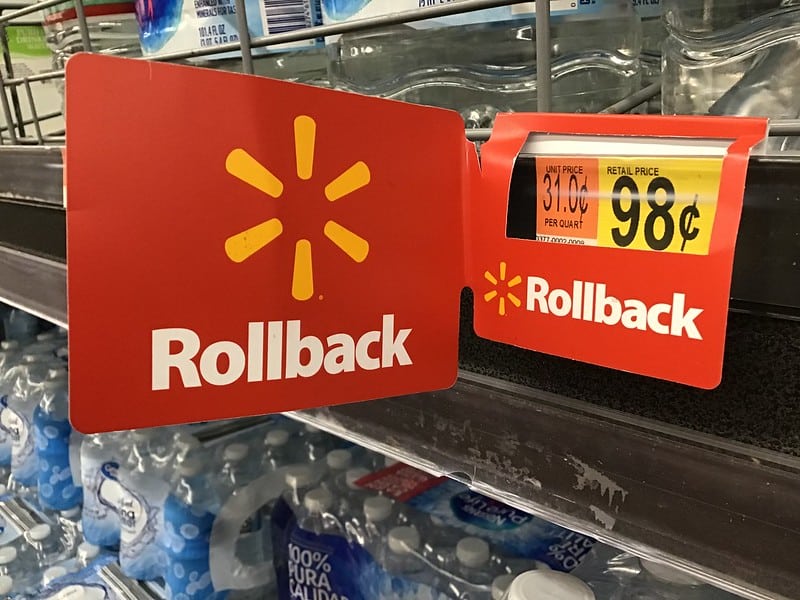
What’s bad for retailers, investors and the overall economy might be good for bargain-hunters.
Rising food prices are forcing cautious shoppers to cut their spending elsewhere. Increasingly, that’s leaving retailers with a whole lot of merchandise that nobody’s buying.
So Walmart is having a big clearance sale across the country. You might still pay more to feed your family, but if you need some affordable new items for your household or new things to wear, you may be in luck.
“Food inflation is double digits,” Walmart explained in a “business update” yesterday. “This is affecting customers’ ability to spend on general merchandise categories and requiring more markdowns to move through the inventory, particularly apparel.”
Walmart’s move toward more markdowns is the latest example of retailers being forced to react to consumers’ changing shopping habits. Last month, Target made a similar announcement, saying it was planning “additional markdowns, removing excess inventory and canceling orders” in order to “right-size its inventory for the balance of the year and create additional flexibility to focus on serving guests in a rapidly changing environment.”
Target’s efforts focused largely on seasonal items like patio furniture, and stay-at-home splurges like furniture and TVs, that it had hoped might appeal to Covid-cautious shoppers who were spending more time at home. But more people are venturing out more this summer. Simultaneously, they’re also being hit with higher prices for necessities like groceries. So furniture and TVs aren’t exactly high on many people’s shopping lists.
They’re also bigger, bulkier items that take up a lot of space. So rather than burying them in the warehouse until next year, Target has had to cut prices to make room for things that shoppers are going to want and need, like back-to-school items.
Walmart’s efforts are expanding beyond big, bulky discretionary items to more mundane necessities like clothing. Clothing sales took a hit during the pandemic, as more people were staying in and working from home. That trend was expected to ease as people started venturing out again. But that was before food inflation hit.
“The increasing levels of food and fuel inflation are affecting how customers spend,” Walmart U.S. CEO Doug McMillon said in a statement. The company’s food sales are still strong, as the company noted that “customers are choosing Walmart to save money during this inflationary period, and this is reflected in the company’s continued market share gains in grocery.” But “while we’ve made good progress clearing hardline categories,” McMillon added, “apparel in Walmart U.S. is requiring more markdown dollars.”
The U.S. Department of Agriculture’s Economic Research Service just issued a new forecast, predicting that food-at-home prices will increase between 10 and 11% this year. Next year, however, it predicts a much more modest increase of 2-3%.
So as you watch your grocery bills climb, relief may be on the horizon. In the meantime, if you have any extra spending money after going grocery shopping, check out the clearance sections for some unexpected deals – while they last.
Image source: jeepersmedia










